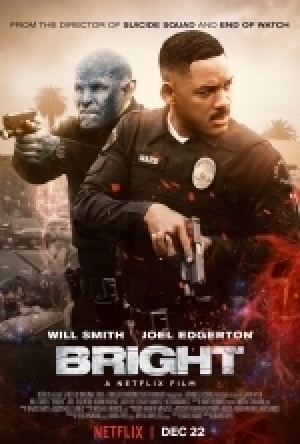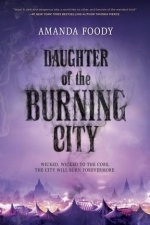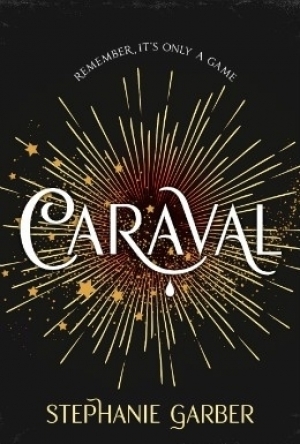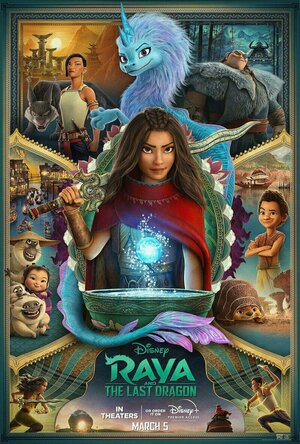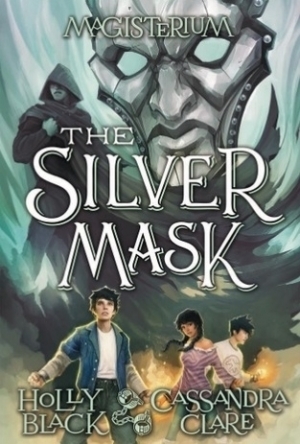Search
Search results
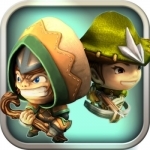
Fantashooting
Games and Entertainment
App
No. 1 iPhone game in Hong Kong, No. 1 iPhone game in Taiwan, No. 1 iPhone game in Singapore, No. 1...
DiscoStu (6 KP) rated Bright (2017) in Movies
Jan 8, 2018 (Updated Jan 8, 2018)
“A competent buddy cop movie that offers solid pacing and character portrayals at the expense of building up the films (admittedly) interesting universe”.
Contains spoilers, click to show
Netflix’s ‘Bright’, directed by David Ayer (Suicide Squad) and starring Will Smith and Joel Edgerton, brings the big budget box office trappings of a fully fledged cinema release to their home streaming subscription service and arguably the end result is a fun and enjoyable, if slightly flawed, buddy-cop-movie-with-a-twist that sets up a universe you’ll likely want to see more of.
Smith plays Daryl Ward, a weary veteran L.A. cop reluctantly partnered with orc partner Nick, the first and only orc to make the force in this alternate earth story. The film opens with Ward taking a round of buckshot from an orc thug whilst Nick looks on waiting for a burrito from a street vendor. The incident leaves a distrust between Ward and Nick, with Ward unsure whether his partner really has his back after Nick not only failed to step up and prevent the shooting but also failed to apprehend the orc perpetrator during the ensuing foot chase. Ward also finds himself at odds with other members of the force who don’t share the police’s ‘progressive’ attitudes of allowing orcs into the force.
The film briefly touches on a two thousand year old conflict between the nine armies and the Dark Lord who was defeated when various races allied to defeat him. In the established lore the orcs allied with the Dark Lord and have been subjugated ever since. The film attempts to portray the orcs through a social commentary that reflects the black community today and how heavy handed the film tackles the subject will probably depend on the viewer. For me it was handled sensitively enough without being too in your face.
The film sees the two protagonists dispatched to a disturbance that quickly escalates to a situation that goes from bad to worse. Finding themselves on the run with a Bright, the film’s titular white haired magic wielders, and a coveted magic wand Ward and Nick have to navigate hostile L.A. gang land environments whilst pursued by Inferni (the magic version of the Illuminati), the police and human and orc gangsters, all who have their own plans for the wand.
The film is shot well, with plenty of scenery that builds up the shared world of humans, orcs, elves , centaurs and the other races that we don’t get to spend any time with. A montage at the start of the film shows various L.A. scenery graffiti tagged with striking imagery depicting the struggle of orcs in an oppressed landscape. Evidently, orc lives matter. The film also doesn’t struggle for pacing. The two hour runtime services the story well enough, even if some of the world building and character exploration suffers as a result. I would have liked to have spent more time exploring the shared history of the various races and understanding the motivations of the stories’ villains but sadly these elements are undersold in favour of a shorter runtime that hurries the narrative along. To the credit of the writers and the director this world bares revisiting and at the time of writing it sounds like Netflix know this too with a sequel already greenlit.
Bright is a fun jaunt in a world I’d like to get to know better. Smith and Edgerton are strong leads who share a strong chemistry and make you care about their characters. The bad guys don’t fare as well here, especially disappointing given that Noomi Rapace is the lead antagonist but hopefully a sequel will correct some of these missteps. Bright feels like a £20 cinema ticket movie and gives enough to the viewer that you’ll want to discuss it with friends afterwards. As a film bundled with your Netflix subscription it’s hard to be too critical.
Smith plays Daryl Ward, a weary veteran L.A. cop reluctantly partnered with orc partner Nick, the first and only orc to make the force in this alternate earth story. The film opens with Ward taking a round of buckshot from an orc thug whilst Nick looks on waiting for a burrito from a street vendor. The incident leaves a distrust between Ward and Nick, with Ward unsure whether his partner really has his back after Nick not only failed to step up and prevent the shooting but also failed to apprehend the orc perpetrator during the ensuing foot chase. Ward also finds himself at odds with other members of the force who don’t share the police’s ‘progressive’ attitudes of allowing orcs into the force.
The film briefly touches on a two thousand year old conflict between the nine armies and the Dark Lord who was defeated when various races allied to defeat him. In the established lore the orcs allied with the Dark Lord and have been subjugated ever since. The film attempts to portray the orcs through a social commentary that reflects the black community today and how heavy handed the film tackles the subject will probably depend on the viewer. For me it was handled sensitively enough without being too in your face.
The film sees the two protagonists dispatched to a disturbance that quickly escalates to a situation that goes from bad to worse. Finding themselves on the run with a Bright, the film’s titular white haired magic wielders, and a coveted magic wand Ward and Nick have to navigate hostile L.A. gang land environments whilst pursued by Inferni (the magic version of the Illuminati), the police and human and orc gangsters, all who have their own plans for the wand.
The film is shot well, with plenty of scenery that builds up the shared world of humans, orcs, elves , centaurs and the other races that we don’t get to spend any time with. A montage at the start of the film shows various L.A. scenery graffiti tagged with striking imagery depicting the struggle of orcs in an oppressed landscape. Evidently, orc lives matter. The film also doesn’t struggle for pacing. The two hour runtime services the story well enough, even if some of the world building and character exploration suffers as a result. I would have liked to have spent more time exploring the shared history of the various races and understanding the motivations of the stories’ villains but sadly these elements are undersold in favour of a shorter runtime that hurries the narrative along. To the credit of the writers and the director this world bares revisiting and at the time of writing it sounds like Netflix know this too with a sequel already greenlit.
Bright is a fun jaunt in a world I’d like to get to know better. Smith and Edgerton are strong leads who share a strong chemistry and make you care about their characters. The bad guys don’t fare as well here, especially disappointing given that Noomi Rapace is the lead antagonist but hopefully a sequel will correct some of these missteps. Bright feels like a £20 cinema ticket movie and gives enough to the viewer that you’ll want to discuss it with friends afterwards. As a film bundled with your Netflix subscription it’s hard to be too critical.
Kyera (8 KP) rated Daughter Of The Burning City in Books
Jan 31, 2018
There were more twists and turns in the story than the labyrinthine paths through the Gomorrah Festival. I was impressed that this was Amanda Foody's debut novel, but that does not mean it was without its faults. Overall, I felt that the Festival itself as a setting was the most intriguing part of the story.
I didn't feel that the magic system was as developed as it should have been, or perhaps it was too developed. It wasn't always clear what people could have as abilities. The added element of being able to have multiple abilities that alter how each other works or each ability manifesting itself completely differently in people made following how the magic worked very difficult. There were also rules or examples that you read that seem to contradict one another. You just had to accept that it wasn't entirely clear and anything could happen.
The setting was certainly the most intriguing part of this story. The Gomorrah Festival, also known as the City of Burning Desires, is a traveling Carnival full of thieves, strumpets, charlatans, performers and fortune tellers. The gates of the city have ever burning flames and the cloying scent of smoke, perfume, and sugar cloak the tents. Amanda Foody's writing brilliantly brings the city to life, although we sadly see very little of the actual Festival. I loved the performance elements of the Night Circus and Caraval, so I was a little disappointed that the locale didn't play a bigger role.
I never really connected with the main character, Sorrina, our thread through the entire story. She is a magic worker who can create illusions with her mind, despite having no eyes to see for herself. Since coming to the Festival, she has begun creating illusions to become her family. They perform with her and despite not being truly real, are quite beloved by Sorrina. Unfortunately, one night a member of her illusion family is killed - but how can illusions be killed?
Sorrina vows to discover who hurt her family and protect the remaining members no matter what. Soon she meets an Up-Mountainer named Luca who is definitely the best character in the book. At first, he seems like the stereotypical sassy, "bad boy" love interest, but he is actually incredibly intelligent. I really enjoyed the dimension he brought to the story and how he balanced out Sorrina's more romantic, unfocused, indecisive character.
Despite the fact that Sorrina's family are illusions, they do feel like real people. Some are more developed than others. You feel for two of her sisters, one who bears the weight of the family on her shoulders and the other who just wants to be a real person. Those two will tug at your heartstrings and make you forget that they are illusions. I didn't feel like I got to know the other family members as well and that was a shame. They were such unique creations that they deserved that connection and time.
The story was fantastical, yet I enjoyed the mystery element as you puzzled through the clues with the characters to discover who killed an illusion, and how. The plot was a little convoluted so at times my attention waned, but overall I enjoyed the book. There were some pacing issues that could have been resolved by some additional editing/culling of scenes. Sometimes when I sat down I was completely engrossed in the plot, but there were also others where I picked the book up and put it down moments later.
I felt that the story was tied up satisfactorily and it didn't leave me with too many questions, but I won't lie and say I wouldn't enjoy another book set in that world with different characters. The level of development is still impressive for a debut novel and I cannot wait to see more from Amanda Foody.
I would definitely recommend this to young adult/teen readers who enjoy fantasy novels with really intriguing worlds, but don't expect too much of the carnival element to be present in the plot.
I didn't feel that the magic system was as developed as it should have been, or perhaps it was too developed. It wasn't always clear what people could have as abilities. The added element of being able to have multiple abilities that alter how each other works or each ability manifesting itself completely differently in people made following how the magic worked very difficult. There were also rules or examples that you read that seem to contradict one another. You just had to accept that it wasn't entirely clear and anything could happen.
The setting was certainly the most intriguing part of this story. The Gomorrah Festival, also known as the City of Burning Desires, is a traveling Carnival full of thieves, strumpets, charlatans, performers and fortune tellers. The gates of the city have ever burning flames and the cloying scent of smoke, perfume, and sugar cloak the tents. Amanda Foody's writing brilliantly brings the city to life, although we sadly see very little of the actual Festival. I loved the performance elements of the Night Circus and Caraval, so I was a little disappointed that the locale didn't play a bigger role.
I never really connected with the main character, Sorrina, our thread through the entire story. She is a magic worker who can create illusions with her mind, despite having no eyes to see for herself. Since coming to the Festival, she has begun creating illusions to become her family. They perform with her and despite not being truly real, are quite beloved by Sorrina. Unfortunately, one night a member of her illusion family is killed - but how can illusions be killed?
Sorrina vows to discover who hurt her family and protect the remaining members no matter what. Soon she meets an Up-Mountainer named Luca who is definitely the best character in the book. At first, he seems like the stereotypical sassy, "bad boy" love interest, but he is actually incredibly intelligent. I really enjoyed the dimension he brought to the story and how he balanced out Sorrina's more romantic, unfocused, indecisive character.
Despite the fact that Sorrina's family are illusions, they do feel like real people. Some are more developed than others. You feel for two of her sisters, one who bears the weight of the family on her shoulders and the other who just wants to be a real person. Those two will tug at your heartstrings and make you forget that they are illusions. I didn't feel like I got to know the other family members as well and that was a shame. They were such unique creations that they deserved that connection and time.
The story was fantastical, yet I enjoyed the mystery element as you puzzled through the clues with the characters to discover who killed an illusion, and how. The plot was a little convoluted so at times my attention waned, but overall I enjoyed the book. There were some pacing issues that could have been resolved by some additional editing/culling of scenes. Sometimes when I sat down I was completely engrossed in the plot, but there were also others where I picked the book up and put it down moments later.
I felt that the story was tied up satisfactorily and it didn't leave me with too many questions, but I won't lie and say I wouldn't enjoy another book set in that world with different characters. The level of development is still impressive for a debut novel and I cannot wait to see more from Amanda Foody.
I would definitely recommend this to young adult/teen readers who enjoy fantasy novels with really intriguing worlds, but don't expect too much of the carnival element to be present in the plot.
"Whatever you've heard about Caraval, it doesn't compare to the reality. It's more than just a game or a performance. It's the closest you'll ever find to magic in this world . . ." Caraval is this indescribable world that you just need to fall into whole-heartedly.
The setting is so vividly described from the colours, to the buildings, and the people populating the game that you are instantly transported into the game yourself. Legend's Island comes alive in your mind from the moment Scarlett passes through its gates until the final words of the epilogue. Caraval draws you in and doesn't let go.
We are introduced to two sisters, Scarlett and Donatella who have always dreamt of seeing Caraval but they never thought it would truly happen. Stuck on their island with an overbearing father and no desire to cross him, they could only wish. Imagine their surprise when, finally, they receive a response and are invited to partake in the greatest game of mystery, illusions and intrigue - Caraval.
We are faced with the same questions that Scarlett is, who is Legend, where is Tella and will she be able to complete the game? The stakes of this year's game are greater than the past, this year players must find Tella. As many race to discover the clues and don't always behave in the most respectable manner - Scarlett must win without succumbing to the debauchery of the game or else she may never see her sister again.
The author keeps you guessing about each character's motivation and desires, as Caraval sweeps you away. This book has frequently been compared to the Night Circus and while it has similarities, they are very different stories. Caraval is its own unique take on a story that's magical, mysterious and expansive. It is also more fast-paced than the Night Circus. While I believe that readers who enjoy the Night Circus will also enjoy this novel, don't expect it to be the same.
My favourite aspect of this book was the world building, as I mentioned previously. I am so impressed by the detail and love poured into this story, which is made even more impressive because this is a debut novel. The author's writing sounds more like a seasoned writer than a debut novel and it's fantastic.
The characters were well developed and diverse, adding to the atmosphere of the story. Scarlett is determined and likable, even if she occasionally makes poor decisions. You feel for her character and root for her success. Julian is enticing, but you never really know where he stands and what his motivations are so it makes it difficult to trust him. Even so, I still loved his character. Tella is less likable, in my opinion than Scarlett so I had trouble connecting to her throughout the story.
Make sure you give yourself time to read because once you pick it up, you're not going to put it down. Highly recommended to young adult/teen readers who enjoy magic, fantasy, mysteries, and truly well written and expansive world building.
The setting is so vividly described from the colours, to the buildings, and the people populating the game that you are instantly transported into the game yourself. Legend's Island comes alive in your mind from the moment Scarlett passes through its gates until the final words of the epilogue. Caraval draws you in and doesn't let go.
We are introduced to two sisters, Scarlett and Donatella who have always dreamt of seeing Caraval but they never thought it would truly happen. Stuck on their island with an overbearing father and no desire to cross him, they could only wish. Imagine their surprise when, finally, they receive a response and are invited to partake in the greatest game of mystery, illusions and intrigue - Caraval.
We are faced with the same questions that Scarlett is, who is Legend, where is Tella and will she be able to complete the game? The stakes of this year's game are greater than the past, this year players must find Tella. As many race to discover the clues and don't always behave in the most respectable manner - Scarlett must win without succumbing to the debauchery of the game or else she may never see her sister again.
The author keeps you guessing about each character's motivation and desires, as Caraval sweeps you away. This book has frequently been compared to the Night Circus and while it has similarities, they are very different stories. Caraval is its own unique take on a story that's magical, mysterious and expansive. It is also more fast-paced than the Night Circus. While I believe that readers who enjoy the Night Circus will also enjoy this novel, don't expect it to be the same.
My favourite aspect of this book was the world building, as I mentioned previously. I am so impressed by the detail and love poured into this story, which is made even more impressive because this is a debut novel. The author's writing sounds more like a seasoned writer than a debut novel and it's fantastic.
The characters were well developed and diverse, adding to the atmosphere of the story. Scarlett is determined and likable, even if she occasionally makes poor decisions. You feel for her character and root for her success. Julian is enticing, but you never really know where he stands and what his motivations are so it makes it difficult to trust him. Even so, I still loved his character. Tella is less likable, in my opinion than Scarlett so I had trouble connecting to her throughout the story.
Make sure you give yourself time to read because once you pick it up, you're not going to put it down. Highly recommended to young adult/teen readers who enjoy magic, fantasy, mysteries, and truly well written and expansive world building.
Gareth von Kallenbach (980 KP) rated Raya and the Last Dragon (2021) in Movies
Mar 1, 2021
In a magical land known as Kumandra; Humans and Dragons co-exist in harmony. When a threat in the form of creatures known as Druun arrive and threaten to destroy everything; the Dragons combine their power to defeat them but in doing so all but one of the Dragons remains.
In the new Disney animated film “Raya and the Last Dragon”; audiences are introduced to the narrative of the story by Raya (Kelly Marie Tran), who tells that the world has become fractured and she is to blame. A sacred relic that the Dragons used to Defeat the Druun has given her kingdom prosperity but the surrounding kingdoms all named after various parts of a Dragon are envious of their position.
When Raya’s father Chief Benja (Daniel Dae Kim); attempts to unite the other kingdoms, a tragic betrayal results in the relic becoming fractured with each kingdom taking a fragment. As if this situation was not bad enough; the fracturing of the relic ushers in the return of the Druun and they quickly resume turning everything not protected by a barrier of water to stone.
The story then jumps years into the future where Raya and her faithful companion Tuk Tuk (Alan TudyK) are searching the rivers of the kingdoms in an effort to find the location where the last Dragon Sisu (Awkwafina) is rumored to have been sleeping for 500 years.
Raya is eventually able to locate Sisu who is a very playful and animated creature and the two set off to save the day by obtaining the missing fragments through any means necessary. Naturally, their journey will be filled with dangers, adventure, and humor, as the various kingdoms have their own unique visual style and characters; some of whom join with Raya on her quest to provide much-needed support, perspective, and at times; humor.
The movie is visually amazing as the artists clearly were inspired to create a world that combines elements of many Asian cultures yet has its own unique traits. I marveled at the details of the water and ripples and how the railings on a boat showed uneven discoloration and wear in just a casual scene where the characters talked. It is this attention to detail that really adds to the magic of the film as well as the immersion into fantasy.
The supporting cast was great and there are some characters I do not wish to spoil who practically steals every scene in which they are in. My wife and I were captivated from the very start as Disney has created a film that embodies much of their classic themes and yet expands upon them to create a film the entire family will enjoy.
The movie will be released in cinemas and via a paid option for Disney+ subscribers. We attended a press screening at a cinema; our first in almost a year and found the setup to be very safe and it was amazing to see such visual splendor on a big screen.
Disney has once again created a new classic and has given audiences the magic that they are known for at a time when it is most needed.
4 stars out of 5.
In the new Disney animated film “Raya and the Last Dragon”; audiences are introduced to the narrative of the story by Raya (Kelly Marie Tran), who tells that the world has become fractured and she is to blame. A sacred relic that the Dragons used to Defeat the Druun has given her kingdom prosperity but the surrounding kingdoms all named after various parts of a Dragon are envious of their position.
When Raya’s father Chief Benja (Daniel Dae Kim); attempts to unite the other kingdoms, a tragic betrayal results in the relic becoming fractured with each kingdom taking a fragment. As if this situation was not bad enough; the fracturing of the relic ushers in the return of the Druun and they quickly resume turning everything not protected by a barrier of water to stone.
The story then jumps years into the future where Raya and her faithful companion Tuk Tuk (Alan TudyK) are searching the rivers of the kingdoms in an effort to find the location where the last Dragon Sisu (Awkwafina) is rumored to have been sleeping for 500 years.
Raya is eventually able to locate Sisu who is a very playful and animated creature and the two set off to save the day by obtaining the missing fragments through any means necessary. Naturally, their journey will be filled with dangers, adventure, and humor, as the various kingdoms have their own unique visual style and characters; some of whom join with Raya on her quest to provide much-needed support, perspective, and at times; humor.
The movie is visually amazing as the artists clearly were inspired to create a world that combines elements of many Asian cultures yet has its own unique traits. I marveled at the details of the water and ripples and how the railings on a boat showed uneven discoloration and wear in just a casual scene where the characters talked. It is this attention to detail that really adds to the magic of the film as well as the immersion into fantasy.
The supporting cast was great and there are some characters I do not wish to spoil who practically steals every scene in which they are in. My wife and I were captivated from the very start as Disney has created a film that embodies much of their classic themes and yet expands upon them to create a film the entire family will enjoy.
The movie will be released in cinemas and via a paid option for Disney+ subscribers. We attended a press screening at a cinema; our first in almost a year and found the setup to be very safe and it was amazing to see such visual splendor on a big screen.
Disney has once again created a new classic and has given audiences the magic that they are known for at a time when it is most needed.
4 stars out of 5.
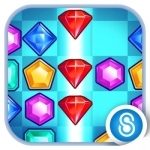
Jewel Mania™
Games and Entertainment
App
Jewel Mania - The new match 3 sensation is here, with brilliant jewels in over 600 dazzling puzzles!...

Leap of Fate
Games
App
*** Minimum hardware: iPad 4, iPad mini 2, iPhone 5s. *** Leap of Fate is a furiously-paced...
Goddess in the Stacks (553 KP) rated Crimson Bound in Books
Apr 30, 2018
Well, Rosamund Hodge has done it again. I think this one was actually better than Cruel Beauty, and about on par with Bright Smoke, Cold Fire. Crimson Bound is billed as Cruel Beauty #2, but it doesn't actually seem to take place in the same world. They're only connected in that they're both dark fantasy retellings of fairy tales. Crimson Bound is loosely (VERY loosely!) based on Little Red Riding Hood. It's amazing.
In Rachelle's world, The Forest is the dominating theme - it encroaches on villages and towns, sending "woodspawn" to attack people, and Forestborn to turn more humans into bloodbound and ultimately Forestborn. Humans are sheep to The Forest; prey to the Forestborn. Once a Forestborn has marked a human, they have three days to kill someone or they will die. If they kill someone, they become bloodbound - an intermediary step before they become completely Forestborn. Bloodbound have increased strength, resilience, and fighting skills, so the King has extended an offer to Bloodbound - even though they are known murderers, since they had to have killed someone to gain their powers - he will grant them clemency in exchange for their service to the realm. Guard the people from the woodspawn, the mindless monsters the Forest sends to attack people, and he'll let you live.
So Rachelle is a Bloodbound, bound to the King. Unlike most, though, she still believes in some of the old pagan stories about The Forest and the Devourer - the ancient evil driving the Forest's predatory ways. The book is about her quest to stop it from coming through into their world and destroying everything. There are twists and reveals that I cannot mention here, but it is an AMAZING piece of world-building and myth and I LOVED IT.
I also discovered she has several short stories post on her website so I'll be binge-reading those for a while!
This book - and anything by Rosamund Hodge - is pure magic. If you like dark fairy tales, you can't do better than this.
You can find all my reviews at http://goddessinthestacks.wordpress.com
In Rachelle's world, The Forest is the dominating theme - it encroaches on villages and towns, sending "woodspawn" to attack people, and Forestborn to turn more humans into bloodbound and ultimately Forestborn. Humans are sheep to The Forest; prey to the Forestborn. Once a Forestborn has marked a human, they have three days to kill someone or they will die. If they kill someone, they become bloodbound - an intermediary step before they become completely Forestborn. Bloodbound have increased strength, resilience, and fighting skills, so the King has extended an offer to Bloodbound - even though they are known murderers, since they had to have killed someone to gain their powers - he will grant them clemency in exchange for their service to the realm. Guard the people from the woodspawn, the mindless monsters the Forest sends to attack people, and he'll let you live.
So Rachelle is a Bloodbound, bound to the King. Unlike most, though, she still believes in some of the old pagan stories about The Forest and the Devourer - the ancient evil driving the Forest's predatory ways. The book is about her quest to stop it from coming through into their world and destroying everything. There are twists and reveals that I cannot mention here, but it is an AMAZING piece of world-building and myth and I LOVED IT.
I also discovered she has several short stories post on her website so I'll be binge-reading those for a while!
This book - and anything by Rosamund Hodge - is pure magic. If you like dark fairy tales, you can't do better than this.
You can find all my reviews at http://goddessinthestacks.wordpress.com
RəX Regent (349 KP) rated Warcraft (2016) in Movies
Feb 19, 2019
To begin, I am not really up on the plot of the game in which this movie is based, though I do understand that this is a prequel and that the tone is reasonably accurate to the that of the long enduring PC game.
But derivative is the word. The game was designed to allow its players to interact with each over and across the internet and essentially play in scenarios which span the fantasy genre, itself drawing from such classics as Lord Of the Rings, Dungeons and Dragons and every medieval or ancient myth imaginable.
As a game, this sounds like fun, taking on roles and pretending to be mythological characters, wielding swords and magic, but since this was already taken wholesale from the genre, including films, what was the point?
Essentially, what we have is an epic mash up of films which have already made there mark whilst offering little if anything new worth talking about. The plot twists are predicable if not hammy, the characterisations are dull and cliched and in the end there is little to offer but a brand name and endless special effects.
The movie does pick up a bit in the third act but even this is let down with a finale of world building and sequel teasing, with the plot left wide open and several plot lines ready to go if there was ever to be a Warcraft 2. The problem is that there is little to tantalise unless you are already a die hard fan. The writing is poor, effective for driving the plot along at some pace but it is mundane, predictable and lacking any real intrigue or interest. It simply goes through the motions as does almost everything and everyone else in the film as a whole.
I want to say that it could have been better, but I can not. I think that Jones and his team have probably done a reasonable job of adapting this game but that is what it is, a derivative PC game and hardly suitable for a movie of this scale.
When will they learn?
But derivative is the word. The game was designed to allow its players to interact with each over and across the internet and essentially play in scenarios which span the fantasy genre, itself drawing from such classics as Lord Of the Rings, Dungeons and Dragons and every medieval or ancient myth imaginable.
As a game, this sounds like fun, taking on roles and pretending to be mythological characters, wielding swords and magic, but since this was already taken wholesale from the genre, including films, what was the point?
Essentially, what we have is an epic mash up of films which have already made there mark whilst offering little if anything new worth talking about. The plot twists are predicable if not hammy, the characterisations are dull and cliched and in the end there is little to offer but a brand name and endless special effects.
The movie does pick up a bit in the third act but even this is let down with a finale of world building and sequel teasing, with the plot left wide open and several plot lines ready to go if there was ever to be a Warcraft 2. The problem is that there is little to tantalise unless you are already a die hard fan. The writing is poor, effective for driving the plot along at some pace but it is mundane, predictable and lacking any real intrigue or interest. It simply goes through the motions as does almost everything and everyone else in the film as a whole.
I want to say that it could have been better, but I can not. I think that Jones and his team have probably done a reasonable job of adapting this game but that is what it is, a derivative PC game and hardly suitable for a movie of this scale.
When will they learn?
Kyera (8 KP) rated The Silver Mask in Books
Feb 1, 2018
The Silver Mask is the fourth book in the Magisterium series, which is co-written by Holly Black and Cassandra Clare. We dive back into the world with our characters reeling from the events of the third book. That being said, if you haven't read the series I wouldn't recommend diving into this review.
We find Call in the Panopticon, a prison for Mages because his secret was revealed and now the entire Mage-world fears him. He continues to battle against any decisions he feels might push him down the path to Evil Overlord-ness and assure everyone that he is Call, despite the soul inside him. He struggles with doing what he feels is right and righting his world after what happened in the Bronze Key. It's tough to lose someone and just accept it when you believe that you might have the power to do something about it.
This middle-grade book was a little slow to start, though the pacing issues might have just been me as a reader getting back into the story after not inhabiting the world since the last book was released. Personally, though, I feel that the pacing wasn't as swift as it should have been to keep readers engaged, especially middle-grade readers. A lot of the story just revolved around sneaking about, learning more about his abilities and being trapped in a house. It's tough to make a plot exciting when the main characters don't leave the same house for 75% of the book.
The second half of the book picked up more and by the end of the story, it was definitely engaging. It felt like it was leading up to a finale, but there is a fifth book in the series. Once you read the last few pages and the epilogue it will definitely make you wish the next book was written already. Alas, you'll probably have to wait until the end of 2018 to continue. I would recommend this series to middle-grade readers who are looking to get into fantasy without having to delve into the intrinsic magic systems and vast world-building that some series have.
We find Call in the Panopticon, a prison for Mages because his secret was revealed and now the entire Mage-world fears him. He continues to battle against any decisions he feels might push him down the path to Evil Overlord-ness and assure everyone that he is Call, despite the soul inside him. He struggles with doing what he feels is right and righting his world after what happened in the Bronze Key. It's tough to lose someone and just accept it when you believe that you might have the power to do something about it.
This middle-grade book was a little slow to start, though the pacing issues might have just been me as a reader getting back into the story after not inhabiting the world since the last book was released. Personally, though, I feel that the pacing wasn't as swift as it should have been to keep readers engaged, especially middle-grade readers. A lot of the story just revolved around sneaking about, learning more about his abilities and being trapped in a house. It's tough to make a plot exciting when the main characters don't leave the same house for 75% of the book.
The second half of the book picked up more and by the end of the story, it was definitely engaging. It felt like it was leading up to a finale, but there is a fifth book in the series. Once you read the last few pages and the epilogue it will definitely make you wish the next book was written already. Alas, you'll probably have to wait until the end of 2018 to continue. I would recommend this series to middle-grade readers who are looking to get into fantasy without having to delve into the intrinsic magic systems and vast world-building that some series have.
